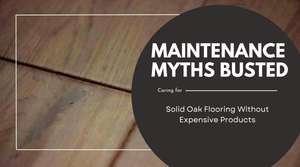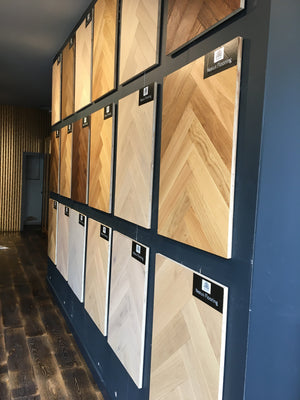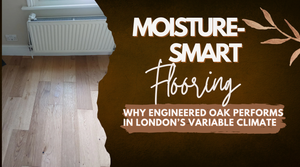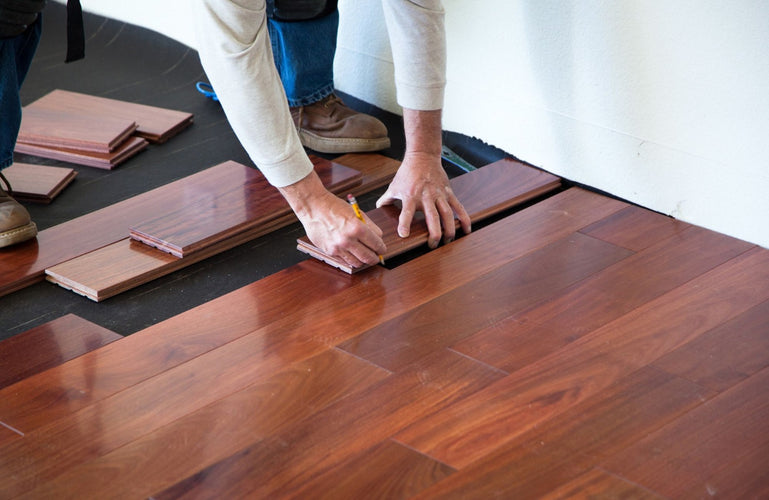Besides once considered color or porosity of wood, the selection of the maximum engineered wood floor for the home includes thickness. The thickness of flooring has a significant impact on how the floor acts and feels underfoot and how long it wears. We go on to cover all about engineered wood flooring thickness and how to determine which one suits your space better.
What Does Engineered Wood Flooring Thickness Mean?
There are two thickness measurements involved when we speak of engineered wood-floor thickness: overall plank thickness and wear-layer thickness.
- Overall Thickness: The entire thickness of the plank is covered, from its hardwood top layer through the core, usually composed of plywood or high-density fiberboard. They range typically from 8mm to 20mm.
- Wear-Layer Thickness: This is the upper layer of solid hardwood, determining the number of file abrasions allowed. This normally varies between 1 mm and 6 mm.
Somehow, considering these two thickness aspects will enlighten how long your flooring will stay and perform well in very many environments.
Why Thickness Matters in Engineered Wood Flooring
Durability: Thicker floors are generally good for durability, especially in circumstances where they must endure heavy foot traffic. The thicker the wear layer, the greater the scratch and dent resistance.
Resurfacing Potential: Engineered wood can only be sanded and refinished if the wear layer is sufficiently thick (usually 3mm or more). This may significantly extend the life of the floor.
Underfootings Comfort and Stability: Thicker boards provide more sound insulation and have a more solid feel underneath, which is ideal for homes with children or pets.
Installation Flexibility: Some thicknesses can work better for specific types of installation. Thicker planks are considered ideal for nail-down installation, whereas thinner ones work well for floating floors..
Ideal Thickness by Room or Use Case
Heavy-Traffic Areas: Give priority to a thicker option for heavy-traffic areas such as hallways, living rooms, and entryways, with at least 14mm to 20mm thickness and 3mm or more wear layer. Such areas are frequently used and should accommodate flooring that can bear such pressure.
Kitchens and Basement: The wet areas require an engineered wood that has a firm plywood core and adequate thickness to resist warping. Such areas would be made resistant by a plank with the thickness of 12mm to 15mm and a 2mm to 3mm wear layer.
Bedrooms or Light-Use Areas: For foul foot traffic areas such as bedrooms or guest rooms, thinner (10mm to 12mm) flooring with a 1.5mm to 2mm wear layer may suffice.
Upper Floors and Apartments: The use of lighter options will lessen the stress on the subfloor. Aim for planks within the range of 8mm to 12mm, depending upon your subfloor and its noise insulation requirements.
Underfloor Heating: Radiant heating encourages well-thin engineered wood flooring (12mm to 15mm) in the foreground to give heat transfer and a stability back.
Comparing Thin vs. Thick Engineered Wood Flooring
Thin Planks (8mm to 12mm):
- Pros: Cost-effective, easier to install, flexible underlayment options.
- Cons: Less durable, limited refinishing options, can feel hollow underfoot.
Medium Thickness (13mm to 15mm):
- Pros: Balanced durability, decent comfort, suitable for most homes.
- Cons: Might offer fewer refinishing opportunities than thicker planks.
Thick Planks (18mm to 20mm+):
- Pros: Superior strength and longevity, excellent underfoot feel, more refinishing potential.
- Cons: More expensive, heavier, may require professional installation.
The right engineered wood flooring thickness depends on your budget, installation method, and how long you plan to stay in your home.
How Does Subfloor Type Affect Your Thickness Choice?
Your subfloor plays a significant role in determining the ideal plank thickness:
- Concrete Subfloors: Go for engineered wood with higher moisture resistance and medium thickness (12mm to 15mm) to avoid issues like swelling.
- Plywood Subfloors: These can handle thicker boards and allow for nail-down installation. You can opt for thicker planks (15mm to 20mm).
- Underfloor Heating Systems: Choose engineered wood that’s not too thick to allow heat to pass through efficiently (12mm to 15mm is ideal).
The installation method also matters. Thicker boards are suitable for staple or nail-down installs, while thinner boards work well with floating methods.
What’s the Best Thickness for Long-Term Value and Maintenance?
Thick wear layer (3 mm or more) for engineered wood flooring should be the choice if you are looking into a long-term solution. Planks that are 14 to 20 mm thick are capable of being refinished, offering better wear retention over time.
Thicker floors, in general, tend to have longer lives, especially in busy households or in areas prone to impact. The upfront investment may be higher, but it returns in fewer repairs, better performance, and higher resale value.
Final Thoughts
In the world of engineered wood flooring, thickness is not merely a number but a very important dimension affecting durability, comfort, maintenance, and value. Think about your lifestyle, home layout, subfloor type, and long-term plans.
With your flooring thickness right, the busy family kitchen or tranquil bedroom retreat will stay gorgeous and perform well for years to come.






